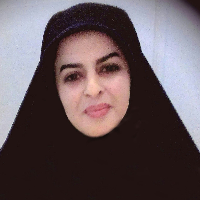Typology of Qajar's Swords in Terms of Function, Form; Decorative Motifs and Techniques
Author(s):
Article Type:
Research/Original Article (دارای رتبه معتبر)
Abstract:
Iran was always vulnerable to foreign attacks due to the strategic and geometrical features of the country. Therefore, having a powerful army was vital for rulers since their stability or decline relied heavily on the power of the forces and the way they utilized their military tools. During the Islamic era, the weapons industry thrived thank to the stability and peace brought by the Safavid government. Time period studied in this research is the Qajar period; Qajar kings ruled over Iran after the Zand dynasty from 1925 to 1794 A.D. In Qajar period, despite the increasing use of fire arms and the more appropriate use of them, past combat weapons were still produced in limited quantity. During this period, various kinds of cold weapons were used in battlefields, such as bladed weapons, knockers and pounders, throwing weapons, and some tools for capturing castles. The subject matter of the research is examining and classification of swords in this period. Sword is one of the most important and most effective arm of cold weapons during the historical and Islamic era, which was used in various forms and decorations with different motifs and techniques in wars and official celebrations. The purpose of this article is introduction and classification of Qajar’s swords; studying their motifs, themes and their decorative techniques; studying distinction aspects of war and ceremonial swords; and use of paintings and photos of this period in comparative studies. In this regard, these questions were considered that are included: How is the typology of the Qajar’s swords in term of form? What decorative motifs, themes and techniques were used for beautification of Qajar’s swords? What kinds of the functions were for swords and what differences are between the war and the ceremonial swords of this period? How the remained paintings and photos help us in recognizing the swords? This research was conducted by a historical - descriptive and comparative approach; and by combining the method of studying library resources and field studies on 50 distinctive samples of the swords, which are mainly held in interior museums and some museums and collections abroad. Based on the findings of the research, blade of the swords in term of curvature contains curved, semi - curved, straight and almost straight with low curvature. Circular and conical shapes were common forms of quillon; and almond shape were common form of scabbard fittings. The swords are decorated with vegetal - geometrical, human - animal and inscriptive motifs with various themes, and often decorated by gilded working, engraving and etching techniques. The expensive decorative techniques (for examples: inlaying and enameling) of some swords show their use at official ceremonies as ceremonial weapons that in this context, paintings and photos can help us to increase information.
Language:
Persian
Published:
Journal of Visual and Applied Arts, Volume:12 Issue: 24, 2019
Pages:
85 to 107
magiran.com/p2121953
دانلود و مطالعه متن این مقاله با یکی از روشهای زیر امکان پذیر است:
اشتراک شخصی
با عضویت و پرداخت آنلاین حق اشتراک یکساله به مبلغ 1,390,000ريال میتوانید 70 عنوان مطلب دانلود کنید!
اشتراک سازمانی
به کتابخانه دانشگاه یا محل کار خود پیشنهاد کنید تا اشتراک سازمانی این پایگاه را برای دسترسی نامحدود همه کاربران به متن مطالب تهیه نمایند!
توجه!
- حق عضویت دریافتی صرف حمایت از نشریات عضو و نگهداری، تکمیل و توسعه مگیران میشود.
- پرداخت حق اشتراک و دانلود مقالات اجازه بازنشر آن در سایر رسانههای چاپی و دیجیتال را به کاربر نمیدهد.
In order to view content subscription is required
Personal subscription
Subscribe magiran.com for 70 € euros via PayPal and download 70 articles during a year.
Organization subscription
Please contact us to subscribe your university or library for unlimited access!



